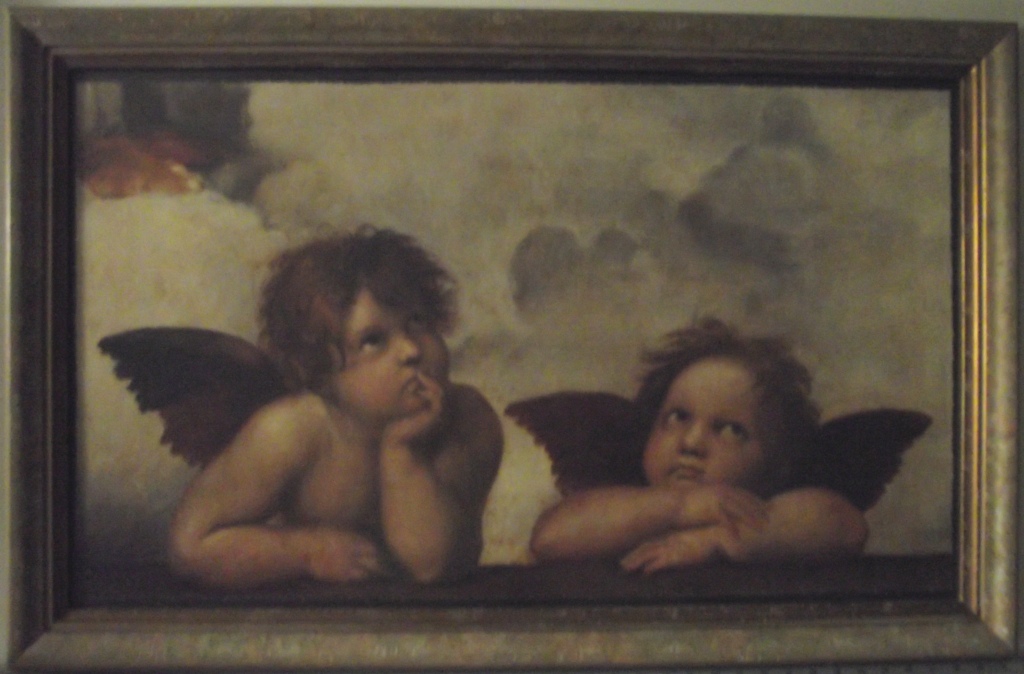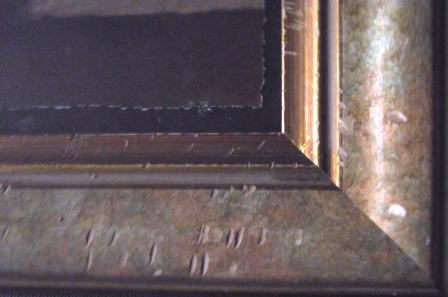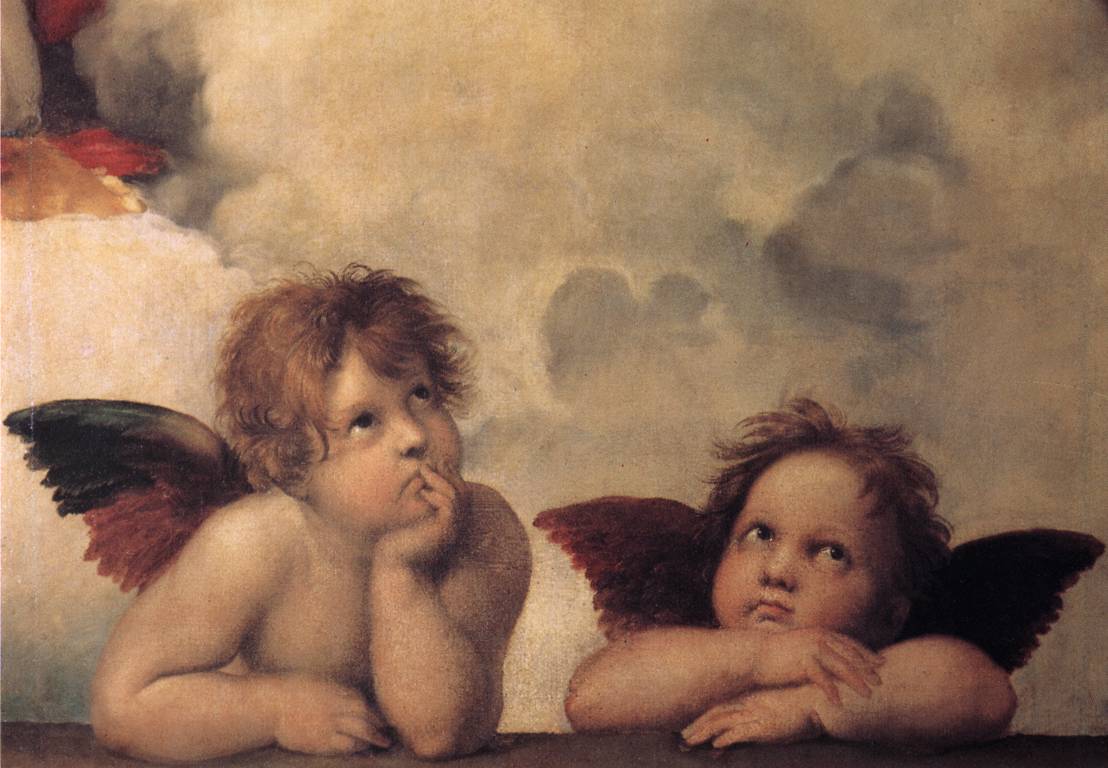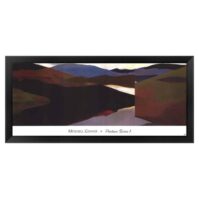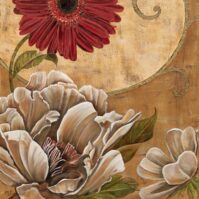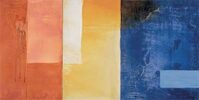Cherubini by Raffaello(Raphael)-Framed
Original price was: $379.00.$75.00Current price is: $75.00.
Description
One of the most imitated, tributed and published images of the Renaissance era, this image by Raffaello(Raphael) is framed as shown in the gallery @ 40 1/4″ x 25 1/4″ in a unique deckled print and aged classic frame with non-glare glass.
Raffaello Sanzio, or Raphael, was born on April 6, 1483 in the town of Urbino, Italy. He was a painter and architect during the High Renaissance period. Compared to other Masters of the time, Raphael remained productive, running a workshop that included 50 students and assistants. Much of his works remain, since they were done mainly for the Vatican. His artworks are commonly organized into three phases: his early career, which conveyed the influence of his teacher; the Florentine period, when Raphael went to the city for four years; and his final years in which he produced his best works.
Raphael came from a family of artists. His father was a court painter to the Duke of Urbino, Federico Il da Montefeltro, and he helped his father paint some of pieces for the court. Growing up and around the court, this introduced Raphael to practicing proper manners and social skills, which other artists of his time lacked. His mother died when he was eight. His father remarried, but also died four years later. Orphaned, Raphael lived with his uncle Bartolomeo, a priest. Since he helped his father at the Duke’s court, he showed his talent while living with his uncle. He did a self portrait when he was about 15 or 16; it is the earliest known example of his work.
He started an apprenticeship under Umbrian master Pietro Perugino. By 1501, he was ready and was considered a Master. His style though, was hard to tell from that of his teacher. Their style and technique are very similar. They apply thick paint, and both use a varnish which causes the finished piece to crack.
His first work is the Baronci Altarpiece for the Church of St. Nicholas of Tolentino in 1502. He visited Sienna with another Perugino assistant, Pinturicchio. They worked on a fresco series together at the Piccolomini Library and Sienna Cathedral. From there, he traveled to Florentine, from 1504-1508. He quickly absorbed Michelangelo’s work, and thought it inspiring. Michelangelo hated Raphael, and thought that he was conspiring against him. For some reason, when Raphael was in Florentine, he was obsessed with drawing naked fighting men. But nothing ever came out of it; just a lot of drawings.
In 1508, he went to Rome, and lived there the rest of his life. In 1510, he was commissioned by Pope Julius II to paint the Pope’s personal library. There were four frescoes altogether: philosophy, law, poetry, and theology. The most well known isThe School of Athens, which represents Philosophy. Many well-known people are portrayed, including Michelangelo. In the center is Plato and Aristotle, Athena is on the right, Michelangelo is the brooding, crouching figure in the front. This work portrays the Renaissance as the new classical age. Pope Julius II died in 1513, but that didn’t stop the work from being completed.
The next Pope, Medici Pope Leo X, befriended Raphael, and gave him even more commissions. In addition, because he was friends with the architect Bramante, he got a sneak peak of the Sistine Chapel, and was awestruck by its scale and beauty.
In 1513, he painted Galatea, based on a several mythological characters. It shows Polyphemus, a one eyed consort (Cyclops) to Galatea, fleeing. The painting incorporates DaVinci’s triangular composition, which shows how Raphael was being influenced by other artists. Two years later, he finished another significant painting, The Sacrifice at Lystra. This work displays two men, Paul and Barnabas, journeying to preach the word of God. They end up in this town, and the town folk believe they are Gods because they heal a crippled man.
Raphael was an accomplished architect as well as painter. Since he was Pope Leo X’s best friend, he was given the commission t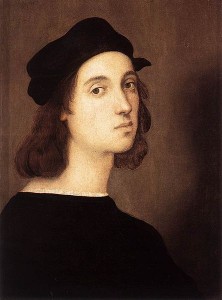 o design St. Peter’s Cathedral, but it was never carried out. If it had been, there would be columns all the way down the nave, which would have made it darker and bulkier than the current design. He also worked on some villas as well, but only one still exists.
o design St. Peter’s Cathedral, but it was never carried out. If it had been, there would be columns all the way down the nave, which would have made it darker and bulkier than the current design. He also worked on some villas as well, but only one still exists.
During his lifetime, he was made Groom of the Chamber, which means he just waits for the Pope to help him, or in Raphael’s case, he received “favors” from Pope Leo. He was knighted of the Papal Order of the Golden Spur, recognizing your contribution to the glory of the Catholic Church. Both titles help increase one’s income.
Raphael was supposed to marry Maria Bibbiena, his fiancée, but he never did. Speculation had it that he was thinking about becoming a Cardinal, and if you’re with the Church, marriage was not allowed. Another possible reason is he never really loved her. He had a mistress, whom he nicknamed “La Fornarina”, but her real name was Margherita Luti. Maria actually died only a month or two before Raphael himself.
The last painting by Raphael was The Transfiguration in 1520. He died April 6, 1520. His death was caused by a long night of excessive sex with his mistress, and he fell into a fever. He was given the wrong cure by his doctors, and he died. He was 37 years old. Raphael’s funeral was grand, and was interred at the Pantheon. On his sarcophagus, it says, “Here lies that famous Raphael by whom nature feared to be conquered while he lived, and when he was dying, feared herself to die.”
Vassari wrote a biography of Raphael, and said that he was, “So gentle and charitable that even the animals loved him.”
